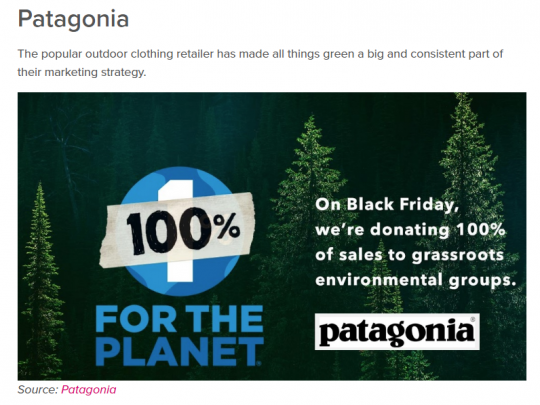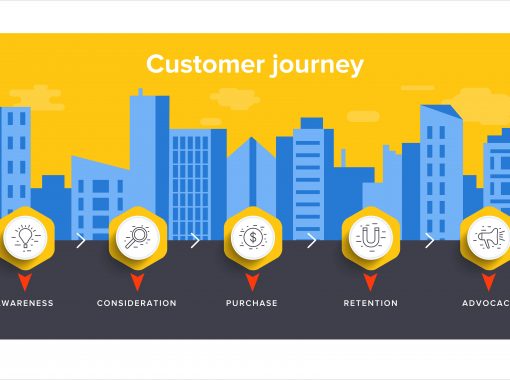
The Ridiculously Easy Way to Increase Blog Traffic by 80%
If you’ve ever traveled to certain parts of the southwestern United States, you may have noticed sprawling acres of Ponderosa Pines sitting atop an otherwise desert landscape.
These trees create a beautiful mosaic that blends the reds and oranges of the desert floor with the brilliant greens of their pine needles.
Despite these pine trees growing in a relatively arid climate, they need a surprising amount of water to thrive. By many estimates, Ponderosa Pines require about 50 inches of water per year to grow.
For reference, Seattle averages about 40 inches of rain per year. In other words, for these trees to stay evergreen, they need a bit of nurturing and care.
You can see where I’m going with this.
Like those Ponderosas, the content on your site needs nurturing long after it’s been planted.
A quick lesson in futility
We were convinced that our blog posts were underperforming.
Our quality-intensive approach to creating content surely meant that we could just set it and forget it.
In other words, “build it and they will come.”
Imagine our dismay when we saw that our blog traffic had remained stagnant for months at a time.
No ebbs and flows. No backlinking.
So, we were convinced that our blogs were underperforming.
But, we were very wrong.
We didn’t realize it at the time, but given the constraints we were placing on producing our content, our blogs were performing about as well as they realistically could.
Here’s what we were doing wrong.
Our blog posts rarely exceeded 500 words
One of my favorite moments from The Simpsons is from the episode “The PTA Disbands,” where Springfield is forced to hire people from the neighborhood to replace elementary school teachers on strike.
Jasper is tasked with teaching Lisa’s 2nd grade class and lays out a set of ground rules all punishable by “a paddlin’”.
We took a similar approach when it came to how long our blog posts were.
Technical SEO topic? That’s 500 words.
Content marketing trends for 2018? Yup, that’s 500 words.
No matter what the topic was, we decided that 500 words was enough.
According to Search Metrics, the average word count of top-ranking content (on Google) is between 1,140-1,285 words.
When you eschew any sort of customization, your work is going to suffer. Especially when it comes to creative endeavors.
We only used one image per post and it was always a stock photo.
If you were like me in high school, your 5-page essays consisted of the following:
- 14 pt. font
- 3 inch margins
- A bloated title and heading
- Block quotes
- 1 line of text spilling onto the 5th page, thus filling the 5-page requirement
Stock photos are just a visual representation of those same tricks we pulled in high school to inflate our content to make it seem more “in-depth” through sheer length.
Adding a bunch of stock photos does little to add to the visual appeal of a blog post.
Nor do they add any sort of value.
Why?
Because they look like this.

There’s a reason why stock images are so meme-able.
There’s also a reason why they’re “stock.”
This isn’t an official stat, but I’m certain the consensus among the marketing community is that 99.999% of stock photos are cringe-worthy representations of real life and emotion.
It’s just filler with an engagement level of virtually zero.
Using stock images to supplement content is just fine.
It’s also just fine to use only one image.
But, that needs to be an either/or situation. Never both.
We never updated our posts.
Writing marketing industry articles is a blessing and a curse.
It’s a blessing because marketing is a fast-paced, evolving industry with new developments every day.
It’s a curse because, well… see above.
What we were doing for strong SEO in 2016 barely applies to what’s standard for 2020.
If your goal is to write evergreen content, it needs to be maintained much like those Ponderosa Pines.
Obsolete doesn’t even begin to describe how painfully outdated some of our content was.
Take for example this blog post.
We haven’t updated it in 7 (SEVEN!!) years.
It performed reasonably well up until about 2 years ago, and then began dropping off.
As more articles are produced that are more up-to-date, our Jurassic press release blog post simply can’t compete.
Here’s how the blog performed over time:

Spoiler alert: we will be refreshing this blog post very soon following this particular post.
Refreshing Blog Posts
We fell into a trap of simply relying on the substance of the content we were producing and ignoring the supplemental elements that can seriously enhance the quality.
In addition to elevating our standards even higher, we decided to embark on refreshing some of our old blog posts.
Specifically, this one.
The result?
An 80% increase in organic traffic when compared with the previous period.
Here’s what we did:
Add more engaging photos

The images you select need to compliment your content, not supplement.
We decided to add photos that actually illustrate our points and assist in telling the story of the content.
In addition to custom graphics, we used branded content from the companies we examined to provide holistic evidence of their marketing tactics.
Updated links
It’s not enough to just replace dead links with live ones.
We also replaced live ones with others that were a bit more relevant.
Additionally, we added links to any new information that would better help the user understand the goal of the content, which brings us to…
New Information
As more data and information became available to us, it made sense to add it to the article so that we can be as up-to-date as possible.
This bumped up the post from about 500 words to just under 1,000.
And it wasn’t that difficult.
We had some specific data that was outdated from 2 years ago, so we replaced it with the most current data.
Update your meta information
Now that your article is ranking for certain keywords, it’s time to update your meta information.
Specifically, you’ll want to update your meta description and your H2 tags.
Once the scope of the article changed, it was time to change information for search engines to let them know that we meant business.
The Results
With these simple changes that anyone can do, this one blog post now gets over 80% more organic traffic than it did before we made these changes.

We also started ranking significantly higher for keywords pertaining to the blog post such as “green marketing” and “green marketing examples”.

Conclusion
Refreshing and maintaining blog posts long after they’ve been published is just as much of a key to success as creating them in the first place.
And there are plenty of tools out there to help.
Canva and Visme are great for making professional infographics that add color and life to your content.
Exploding Topics is a free tool that works similarly as Google Trends to let you know where your blog posts stands against similar articles.
Refreshing your posts won’t work every single time.
But, more often than not, adding quality information to a blog post is like providing some much needed water to a growing Ponderosa.
Francesco is the Director of Marketing for ContentWriters. He has a passion for all things digital and creative, but balances out that positivity with the complete and utter hopelessness that comes with being a die-hard New York Mets fan.







